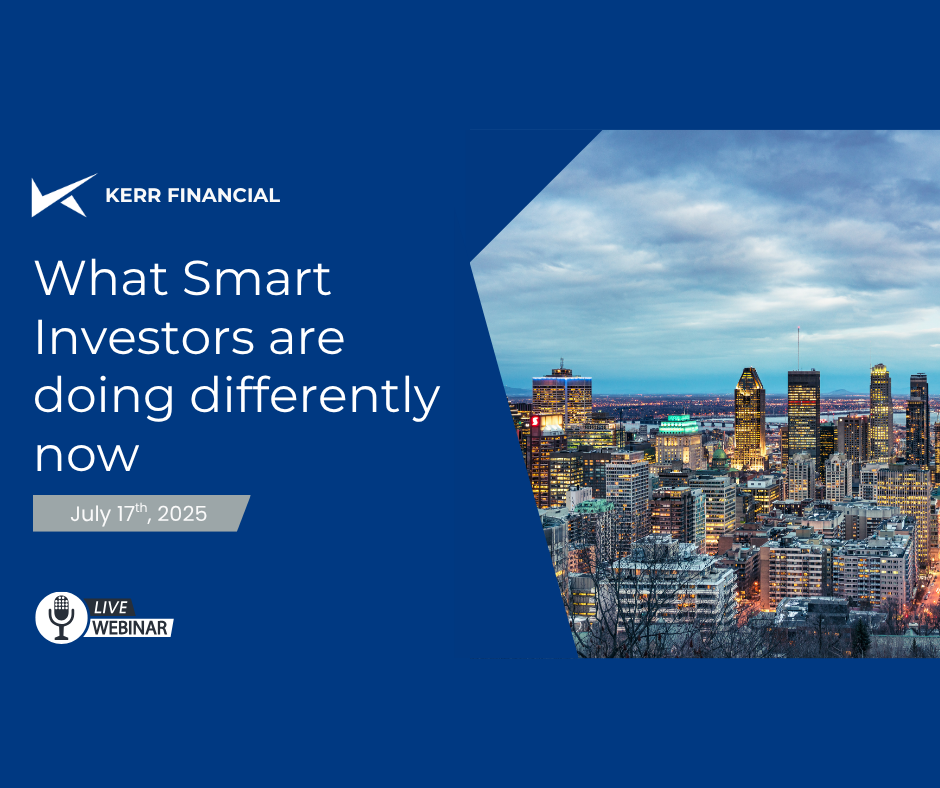Without letting emotion take the lead, high-net-worth investors can protect investments in volatile markets with thoughtful planning and a steady approach.
Market volatility isn’t new, but in today’s environment, it can feel especially intense. Whether you’re managing a complex portfolio or evaluating how macro conditions affect your long-term plan, it’s natural to question your next move. Protecting your investments in volatile markets starts with discipline and a structured approach, not emotional reactions.
The truth is, most costly investment mistakes happen in periods of uncertainty, not because of bad markets, but because of emotional decisions.
This guide outlines how high-net-worth investors can protect capital, stay disciplined, and respond strategically to volatility.
Why Emotional Investing Hurts Performance
Even seasoned investors fall into classic traps: panic selling during downturns, chasing returns during rallies, or reacting to headlines rather than fundamentals. These behaviours often result in selling low and buying high, the exact opposite of building wealth.
Investors’ decisions can be influenced by known emotional biases, and this can have a detrimental effect on the performance of their portfolios as explained by Stephen R. Foerster in his article: ”Investing Through Uncertainty: 5 Lessons in Emotional Discipline’’¹.
The solution? A clearly defined plan, structure around decision-making, and confidence in the role each component of your portfolio plays.
Today’s Market Landscape (June 2025)
The Bank of Canada has held its key policy rate steady at 2.75%, following a series of cuts in late 2024 and early 2025.2 While inflation has eased from its highs, core price pressures remain sticky, particularly in services. Ongoing uncertainty around U.S. trade policy and global supply chains has made the central bank cautious about moving too quickly.
Meanwhile:
- Equity markets remain volatile, with widening dispersion across sectors and regions.
- Currency movements and capital flow shifts continue to affect Canadian investors with global portfolios.
- Geopolitical tensions, including the Russia-Ukraine war and the unrest in the Middle East are contributing to market instability.
While these dynamics are complex, they don’t require reactionary moves. What they call for is a clear, disciplined approach rooted in long-term planning.
Proven Strategies to Strengthen Portfolios in Uncertain Times
There are various ways to keep a ship steady in rough waters, let’s explore a few solutions.
1. Diversifying with Intention
In unpredictable markets, sound strategy isn’t about reacting to headlines — it’s about reinforcing the structures and diversification already in place to withstand them. These are not one-size-fits-all tactics, but principles that support long-term financial resilience.
2. Liquidity as a Strategic Tool
To protect investments in volatile markets, liquidity is key. Cash isn’t just a buffer; it gives you flexibility. Maintaining a deliberate cash position provides flexibility to:
- Meet short-term needs without disrupting your broader plan
- Take advantage of opportunities during market dislocation
- Make decisions with greater clarity and less pressure
The right level of liquidity will depend on your overall structure, lifestyle needs, and investment strategy but it should be purposeful, not passive.
3. Rebalance with Discipline
One way to protect your investments in volatile markets is by rebalancing. As markets move, portfolios drift. Rebalancing restores alignment and reinforces buy-low/sell-high behaviour. This quiet, consistent process often drives long-term results more than any single trade or idea.
4. Consider Dollar-Cost Averaging
For those with new capital to deploy, dollar-cost averaging offers a measured approach, gradually entering the market over time. While it doesn’t eliminate risk, it can help reduce the emotional burden of trying to time the perfect entry point.
5. Stress-Test Your Portfolio
Rather than trying to predict the next headline, a more valuable exercise is asking: How well is the portfolio positioned to navigate a range of economic conditions?
Your advisor can help assess how the portfolio might respond to scenarios such as persistent inflation, changing interest rates, or sharp declines in specific sectors. This kind of analysis isn’t about making sudden changes, it’s about confirming that the structure in place still supports your long-term objectives.
Risk Management Is Also Life-Stage Management
The way you protect your portfolio should reflect not just the markets, but your stage of life, income needs, and long-term plans:
- Investors nearing retirement may favour reduced equity exposure or more predictable income strategies.
- Those with longer time horizons may lean into growth, knowing they can weather short-term fluctuations.
- Families managing generational wealth may benefit from shared decision-making frameworks to ensure alignment.
Timeless Principles to Stay Grounded
- Avoid reacting to headlines. Markets react quickly; decisions made in the aftermath often miss the mark.
- Keep your investment policy statement (IPS) current. It should reflect your goals, risk tolerance, and any life changes.
- Work with a steady hand. An experienced advisor can bring objectivity and perspective when it’s hardest to find.
Final Thought: Stay Focused on What Matters Most
Volatility is part of investing. But panic doesn’t have to be.
By staying rooted in your strategy, keeping a disciplined structure in place, and revisiting your plan as your life evolves, you position yourself to protect and grow your wealth over time, even when the path isn’t smooth.
If you’re considering whether your current portfolio remains aligned with your long-term goals, we’re here to help you think it through at your pace and on your terms.
Sources:
1 CFA Institute, Investing Through Uncertainty: 5 Lessons in Emotional Discipline, April 21, 2025. https://blogs.cfainstitute.org/investor/2025/04/21/investing-through-uncertainty-5-lessons-in-emotional-discipline/
2 Bank of Canada, Monetary Policy Report, April 2025. https://www.bankofcanada.ca/publications/mpr/mpr-2025-04-16/
Related Articles
Blog, Estate Settlement & Administration, Investment Management, Personal Financial Planning
Investment Management, Kerr Family Office, Kerr Fundamentals, Kerr Integrated
Investment Management, The Kerr Report






